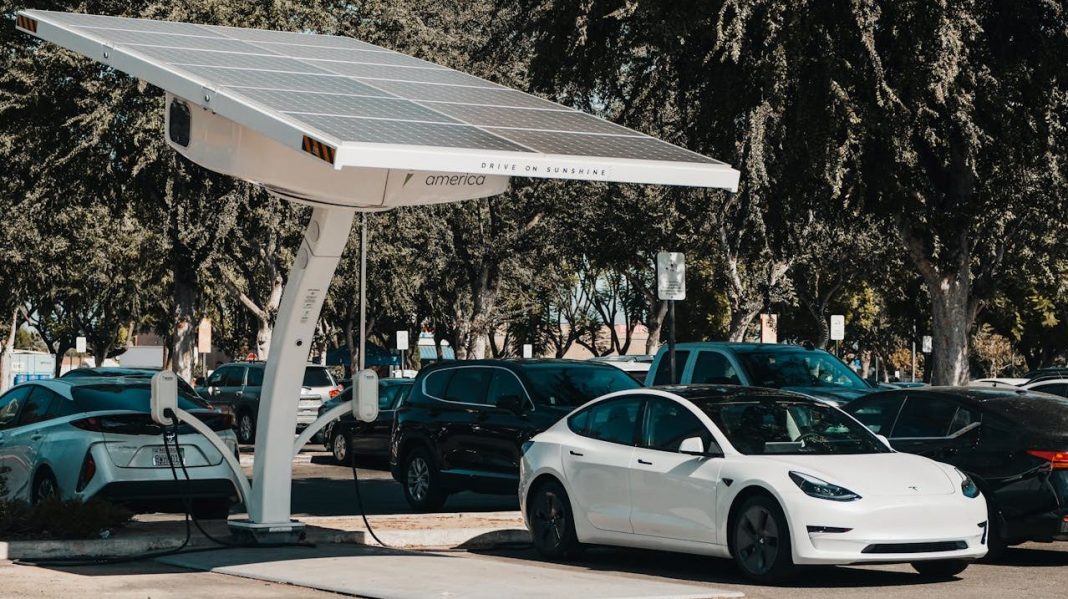Charging electric vehicles (EVs) during prolonged trips can be annoying. Repeated stops, being in queue for long periods, and extreme reliance on charging stations can be draining and exhausting even for the most resolute electric vehicle fanatic. In a recent article published by UnionRayo, a story was featured about one Tesla holder in the U.S. who stepped up and took control of the situation by creating a homegrown solar charging structure that’s as ingenious as it is exciting.
This DIY endeavour, motorised by folding solar panels, is definitely not flawless, but it’s getting a lot of attention and raising provocative questions about what’s in store for electric mobility in the future.
A solar-powered Tesla
Fundamental to this novelty are two folding solar panels, where each produces 500 watts; they straddle the front and rear of the automobile. When completely installed, they can produce 1,000 watts of energy. Although one can only travel for approximately 30 miles after eight hours in the sun, it can satisfactorily offer a sense of security or reassurance during an emergency.
A note of caution, though. While the system is engaged, the panels block both the windshield and rear window, making driving an uphill battle. Since a vehicle needs to be stationary when charging, this limits its viability. Nonetheless, for off-grid travellers or those travelling far from civilisation, this strategy offers a smart solution.
Why he did it – Freedom from the grid
One big question is — why go through all the trouble? For this Tesla user, the impetus was freedom. He needed a dependable backup remedy that doesn’t bank on public charging stations or the electronic network. He was thinking along the lines of a “giant power bank,” not for a computer, but for an automobile.
With solar energy, electricity payments will be a thing of the past as long as the sun is up there and blazing hot. For this car owner, it isn’t about speed, but all about freedom. The concept is not just attractive to tinkerers and road excursionists but to anybody who’s imagining a world where EVs can charge themselves in a nip.
A glimpse into the future of EV design?
While this system is far from a viable merchandise, it poses a stirring question: can car manufacturers start merging solar charging know-how into electric automobiles?
Stories and gossip are already spinning about corporations exploring the idea of built-in solar panels on car rooftops or body panels. While these inventions may not substitute conventional charging completely, they could become imperative backup options or additional sources of energy. After all, it’s not difficult to envision a near future where every EV has a solar exigency strategy built within the car.
Eventually, this narrative isn’t just about one man’s solar-powered Tesla, it’s a mark of innovativeness for things mobile. Notwithstanding its limitations, it mirrors the audacious thinking that motivates authentic transformation. And as the worldwide push for clean energy fast-tracks, tiny moves and clever insights like these could steer the way for colossal leaps in how people automate tomorrow’s automobiles.

